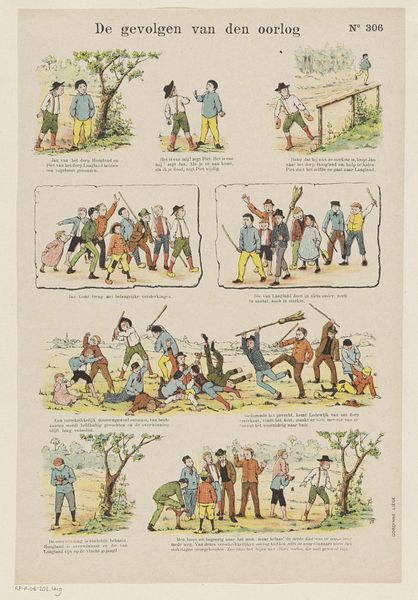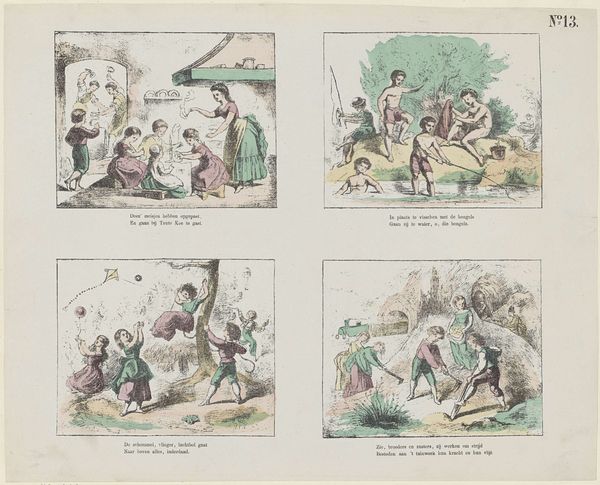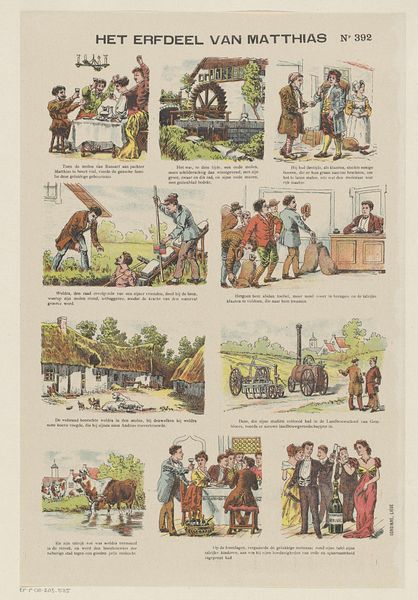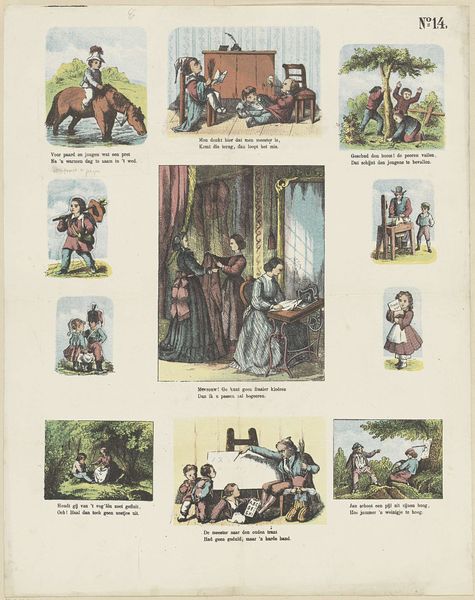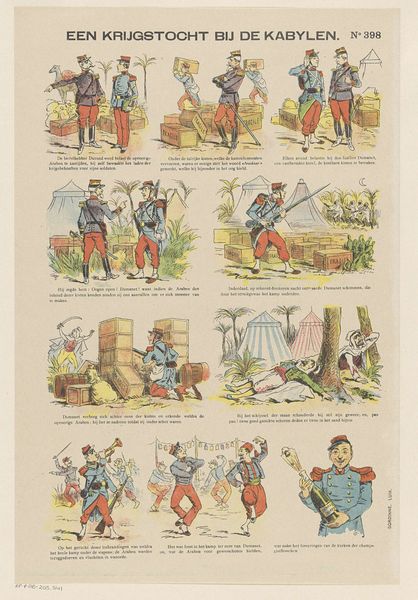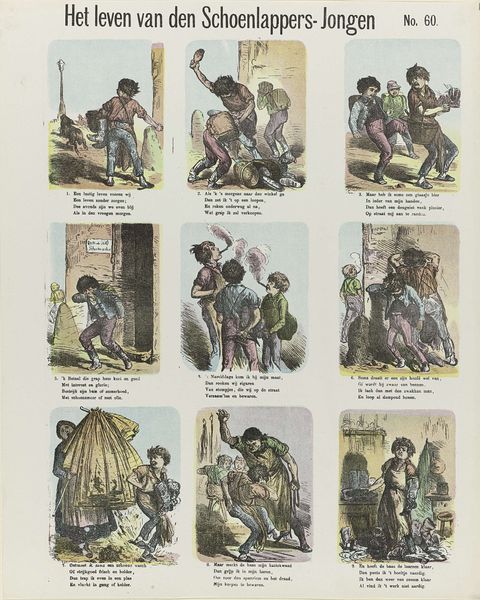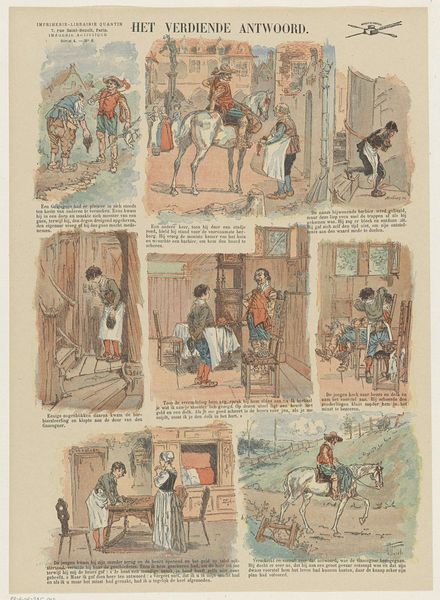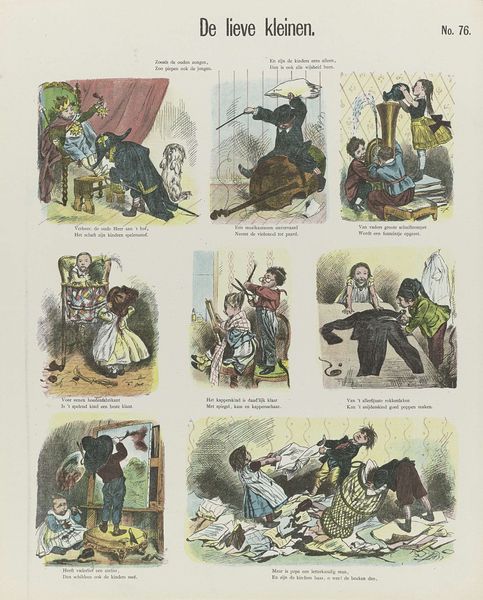
# print
#
child
#
folk-art
#
genre-painting
Dimensions: height 430 mm, width 345 mm
Copyright: Rijks Museum: Open Domain
Editor: This print, "Kinderspelen," from 1878 by De Ruyter & Meijer, feels so nostalgic. It's composed of different scenes depicting children at play, almost like a comic strip. I'm curious about the stories these scenes are trying to tell. What do you see in this piece beyond the surface-level depiction of childhood games? Curator: I see a fascinating document of social construction through play. Consider the materials at hand: the cheap print, the basic inks. These weren’t destined for a fine art gallery, but mass consumption. Look closer at the games themselves. What kind of labor is being represented? There's a drawing on the wall, suggesting creative activity. Someone is flying a kite, made with what seems like readily available materials. Think about how these representations relate to the burgeoning consumer culture of the late 19th century. Editor: So you are suggesting it reveals the commercialization of leisure and learning even back then? Curator: Precisely! What kinds of values are being promoted here, and how accessible would these games and toys really have been to the broader population depicted in popular press? Is this merely an idealised and carefully-selected reality? The artist gives visual form to specific ideas about play that would then further perpetuate particular notions of family. What about the poem excerpts under each picture? Editor: That makes me look at it differently. So, instead of just seeing charming childhood scenes, we are seeing a manufactured view on that period in childhood... Almost propagandistic in its purpose of shaping specific mindsets about families and the working classes at that moment. Curator: Exactly. And through understanding the context of the work’s production and reception, we are offered a glimpse of material consumption, as well as what the editors sought for these children in terms of educational value. Editor: I'm glad you helped me delve deeper than my initial assessment of nostalgia and think about how these were really tools in the cultural moment of shaping mindsets.
Comments
No comments
Be the first to comment and join the conversation on the ultimate creative platform.
